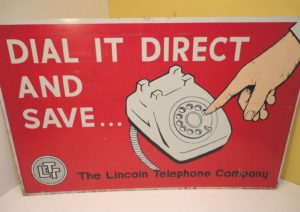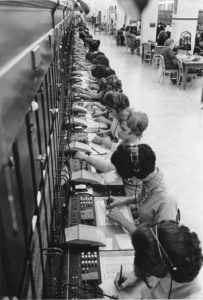
Long distance phone calls are made without a second thought nowadays. I have a very reasonably priced cell phone plan that allows me to converse with my brothers, who live a long ways from me, for no added charge. You can buy cards in convenience stores that give you long distance for pennies a minute. In fact, international calls have gotten cheap. And many take advantage of Skype and similar services to talk to friends and relatives all around the world for next to nothing.
But go back to the 60’s, and many of us were having to speak to an operator to make a call outside our immediate area. And those calls didn’t come cheaply, either.
The first direct-dial long distance phone call was made in 1951 when the mayor of Englewood, NJ called the mayor of Alameda, CA. Before that, most long-distance calls required an operator at both the calling AND receiving end.
But AT&T launched the direct dial system, which necessitated the adoption of area codes, and the long distance operator began a slow but sure path to extinction.

Once upon a time, you will recall, you began your long distance call by dialing 0. When the operator answered, you told her (most of the time, although male operators have existed since the early days) what number you wished to dial, in what city, and what method you preferred. Your choices were person-to-person (expensive, but if your party was unavailable, free) or station-to-station (cheaper, but a voice, ANY voice, on the other end meant the meter began ticking).
Of course, the person-to-person method allowed imaginative individuals to communicate free of charge. Placing a call to “Joe S. Aboy” would announce the gender and name of a newborn free of charge to a relative in Minnesota circa 1965.
By the 1970’s, most of the country was capable of dialing directly, although many chose to do it the old fashioned way. I recall AT&T running many commercials about the reduced cost of 1+ long distance in the early years of that decade.
My thrifty father picked up on the new technology early in the game, insisting that in the unlikely event that a long distance call WAS necessary, it must be made by dialing directly. We were on a party line in Centerton, Arkansas when it finally made it to our home, and the operator would ask you what number you were dialing from, and that was the end of the dialog. After that, you had your own direct long distance connection, “untouched by human hands” (as a local potato chip maker liked to advertise about their wares).
So if you remember JFK, there’s a good chance you also recall when a long distance call meant dialing 0, instead of 1.